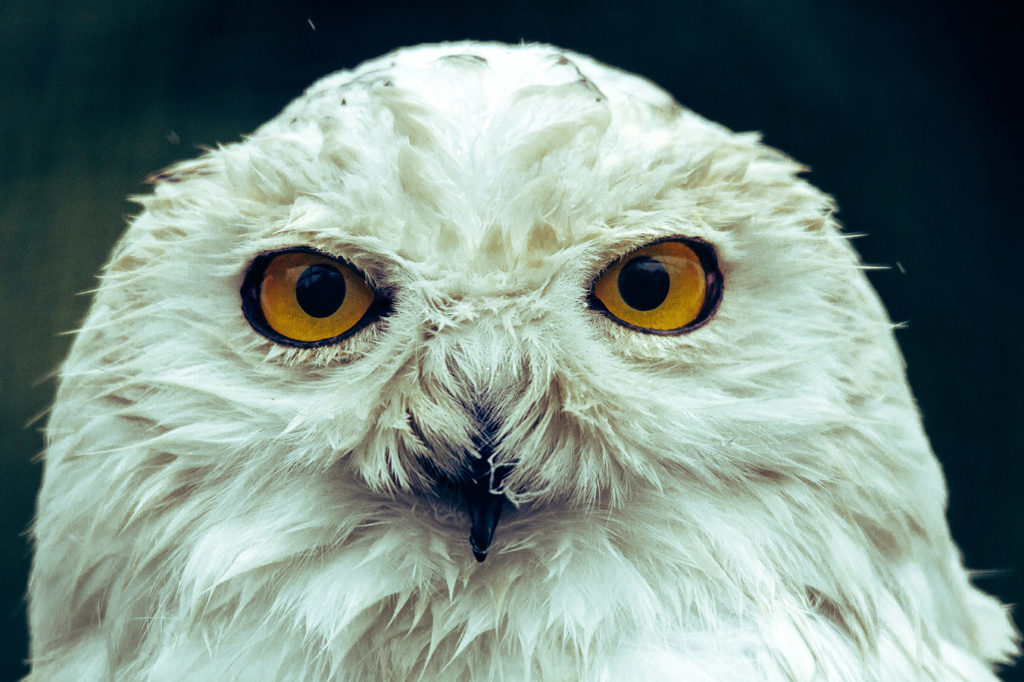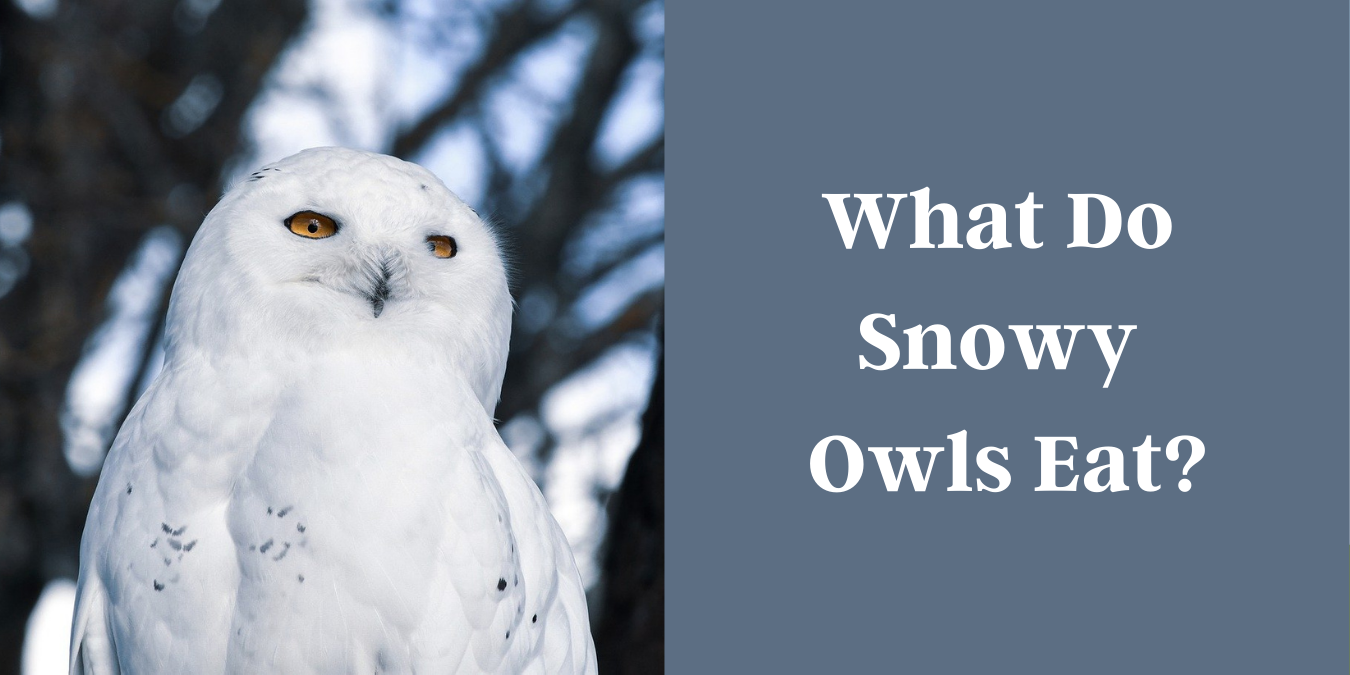The serene Snowy Owl is a beautiful but deadly bird native to the Artic Circle. Made famous by the Harry Potter series thanks to the boy wizard’s companion Hedwig, Snowy Owls are beloved birds rarely seen outside of their icy habitat. They have a strong connection with their food, often migrating South when food is scarce, but what do Snowy Owls eat? Read on to discover this and much more about this magnificent animal.
Quick Facts
- Scientific name: Bubo scandiacus
- Habitat Range: Arctic regions of North America, Europe and Asia
- Conservation status: Vulnerable
- Lifestyle: Nomadic/Migratory
- Diet: Lemmings, Voles and other small mammals
Appearance
As the name suggests, Snowy Owls are white, but there are obvious differences between males and females. Male Snowy owls are almost pure white, with a few scattered dark spots or bars on the wing and tail feathers. Females and juvenile owls have lots of dark spots and bars on their head, chest, wings and tail, while their face and feet remain white.
All Snowy owls have bright yellow eyes and a black beak. The feathering on their feet helps with insulation, preventing frost bite. It is also believed that the feathers may help to prevent injury from prey animals that bite.

Breeding and Nesting
Snowy Owl breeding is a constantly changing phenomenon. Arctic summers are short, but Snowy owls have a breeding season of 4 months, starting in May. Nest sites are free of snow, most likely to protect the chicks once they hatch. Females dig a circular hollow on the ground in exposed areas such as ridges or rocky outcrops, often near the coast. Clutches may be anywhere between 3 and 12 eggs. Some observations have seen clutches as big as 14-16 but this is quite uncommon.
When there is plenty of food to eat for snowy owls, most egg clutches are larger. During times of scarce food, females will lay small clutches or refrain from breeding at all. Males will hunt for food while the female incubates the eggs, usually for around 30-32 days.
Also Read: What Do Walruses Eat?
Hatchlings have fluffy white feathers, with juvenile down-like grey feathers appear later. Chicks stay in the nest for around 3 weeks and will then start to investigate the surrounding area, usually 250-500m. Chicks will continue to rely on their parents for food until they start hunting at around 5 weeks old. They will also have started flying short distances at this age.
Diet
What do Snowy owls eat? Although they rely heavily on rodents, Snowy owls will also hunt other birds, amphibians and crustaceans. Snowy owls are opportunistic hunters and will feed on a variety of prey animals including:
- Lemmings (main prey item)
- Voles
- Rabbit
- Hare
- Mice
- Ducks
- Geese
- Carrion (dead animals) such as Walrus, Seal, Fish, Polar Bear and other birds
Lemmings are a major food source for Snowy owls. Numbers often rise and fall. In times of low lemming population, Snowy owls may migrate south in irruptions. An irruption is the event of a species migrating in large numbers.

Migration and Home Ranges
Migrating Snowy owls often fly further South into North America, with some being spotted as far as California and Florida. They may also migrate to Scandinavia and Russia. Snowy owls do not migrate every year and may not even migrate to the same regions. Some owls have been noted to remain in their home range for 5 or 6 years before migrating South.
As a nomadic species, Snowy owls follow their food sources. Main home ranges of Snowy owls can be found in the Arctic regions of North America and Canada, Greenland, Scandinavia, Russia and Siberia. They often fly out to remote Arctic islands to hunt. If the Arctic region does not provide snowy owls with enough food to eat, they try their luck further South.
Snowy owls are also not fussy regarding the environment they inhabit. Scientists, hunters and fisherman have seen Snowy owls over open water, on marshes, open moorland and on sea ice. Importance is placed heavily on the availability of prey animals and less so on the surrounding landscape.
Did you know that Snowy Owls hunt for food during the day? That is contrary to most species of owls who are nocturnal. Snowy Owls are on the other hand diurnal.
Predators
For Snowy owls, predators change between breeding grounds and non-breeding grounds. Threats to nest sites and chicks include Eagles, Hawks, Wolves, Arctic Foxes and Bears. As juveniles start to leave the nest site, they are at risk from predators, but benefit from continued protection from their parents for several weeks.
Adult owls have very few predators and are generally most at risk when hunting. Other birds of prey may kill a Snowy owl if they attempt to take chicks from nest sites, but most often, Snowy owls are chased away.
During nesting, male Snowy owls will fiercely defend their female partner and the nest. Aside from direct attacks, males will also engage in distraction displays and loud calls. Females do not often engage in nest defence, but this is dependant on the situation. Some females are naturally aggressive towards threats.
Conservation
Snowy owls have a naturally fluctuating population. There are marked decreases in numbers when food is scarce, followed by population booms when food is plentiful. Snowy Owls are listed as vulnerable by CITES II (Convention on International Trade in Endangered Species).
The biggest threat to Snowy owls is starvation as they rely heavily on populations of small mammals. Females may choose not to breed if food is scarce and many chicks may die of starvation where prey animals are limited.
Hunting was also a threat historically, with local hunters collecting eggs and sometimes adults for food. Thankfully, hunting is very rare and has little to no effect on current populations. Hunting is banned in Barrow but native traditional harvest is still permitted in other areas of Alaska.
Trapping is another big problem for Snowy owls. They are often caught in fox traps. In 1993, 300 owls were killed in fox traps in Siberia. Rat poison is also an issue, especially for Snowy owls that hunt around agricultural farmland.
As most Snowy owls do not encroach into public regions, most populations do not need management. The one area where management is needed is around airports, as there are often plane collisions. Airports operate a trap and release program to remote locations.
Also Read: Can You Pour Concrete in the Winter?

